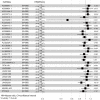Risk assessment model and nomogram established by differentially expressed lncRNAs for early-stage lung squamous cell carcinoma
- PMID: 35117896
- PMCID: PMC8798468
- DOI: 10.21037/tcr-20-999
Risk assessment model and nomogram established by differentially expressed lncRNAs for early-stage lung squamous cell carcinoma
Abstract
Background: The aim of this paper is to identify the differentially expressed lncRNAs (DELs) that could serve as markers for the prognosis of early-stage (stage I-II) lung squamous cell carcinoma (SCC).
Methods: lncRNAs expression data and corresponding clinical information for 395 patients with stage I-II lung SCC were obtained from The Cancer Genome Atlas (TCGA). Univariate Cox regression analysis and LASSO regression were used to screen key lncRNAs, which were then were subjected to a multivariate Cox regression analysis. Furthermore, based on the results of multivariate analysis, lncRNAs with statistical significance were utilized to establish a risk assessment model. Also, a prognostic nomogram based on the risk assessment model was built. These two tools were evaluated by receiver operating characteristic (ROC) curve. Additionally, Kaplan-Meier (KM) survival curves for potential prognostic lncRNAs and clinical factors were performed.
Results: A total of 5 key lncRNAs (AC015712.4, LINC02301, AGAP11, AC099850.3, and AC008915.1) were screened to construct the risk assessment model, and the area under the ROC curves (AUC) showed the model had a general performance. The risk level of the model was identified as an independent prognostic factor for stage I-II lung SCC. A nomogram combining the lncRNA-based risk assessment model, age, and T stage was constructed to predict 3- and 5-year overall survival (OS) in patients with stage I-II lung SCC. The results of ROC and calibration curves demonstrated that the nomogram was reliable in predicting OS rate. Besides, KM survival curves showed OS time was significantly corrected with the expression of AC015712.4, age, and T stage.
Conclusions: In the present study, a risk assessment model and a nomogram based on five lncRNAs were constructed to predict OS time for early-stage lung SCC, which may contribute to the management of lung SCC.
Keywords: Non-small cell lung carcinoma; long noncoding RNA (lncRNA); prognosis; survival.
2020 Translational Cancer Research. All rights reserved.
Conflict of interest statement
Conflicts of Interest: All authors have completed the ICMJE uniform disclosure form (available at http://dx.doi.org/10.21037/tcr-20-999). The authors have no conflicts of interest to declare.
Figures





References
LinkOut - more resources
Full Text Sources
Research Materials
